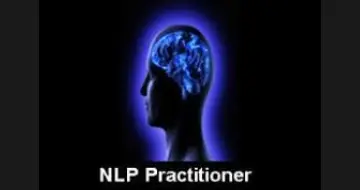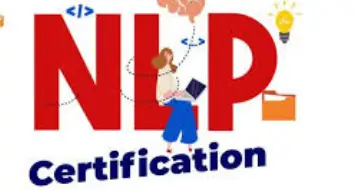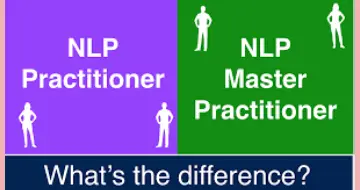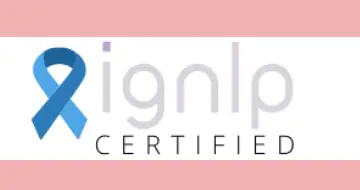IIRF Online > Personal Development > Personal Transformation > Neuro-Linguistic Programming > NLP Practitioner & NLP Life Coach Certification (Accredited)
NLP Practitioner & NLP Life Coach Certification (Accredited) by Udemy
NLP Certification & Ultimate Guide. Become a Certified NLP (Neuro Linguistic Programming) Practitioner & NLP Life Coach
Course Highlights
- Understand of how the mind works and how to shift negative emotions and limiting beliefs QUICKLY, for yourself and your clients
- Be a master communicator, including body language, rapport, and persuasion
- Use a toolbox of powerful, proven Neuro Linguistic Programming and life coaching tools, models, and step-by-step processes
- Help clients decrease stress, release bad habits, overcome phobias, release limitations and take back control of their minds and their lives
- Help clients set goals they can actually achieve by hacking the mind and navigating around predictable mental and behavioral road blocks
- Create a successful NLP and life coaching practice working with clients to transform their lives
- Earn an official NLP Practitioner and NLP Life Coach CERTIFICATION
Skills you will learn!
Curriculum
10 Topics
Welcome
NLP and Course Goals
Fun Demonstration Preview!
How to Take This Course
DOWNLOAD: Complete NLP Practitioner Manual
NLP and Life Coaching DISCLAIMER
ROADMAP FOR BUILDING A SUCCESSFUL LIFE COACHING BUSINESS...
Questions; Resources and Meet the Instructors
All Course Documents in One Handy Place
REQUIRED: Agreement; Disclaimer and Code of Ethics
5 Topics
Being Non-Judmental and Active Listening
Effective Questioning and Challenging
Rapport Building and Goal Setting
Confidentiality and Accountability
Growing as a Coach (CANI)
8 Topics
Section Introduction: Foundations of NLP
Workbook for Section 1 Part 1
Understanding Neuro Linguistic Programming (NLP) Part 1
Understanding Neuro Linguistic Programming (NLP) Part 2
NLP Communication Model (How We Interpret Our Reality)
NLP Communication Model VIDEO
Additional Filters
The Neurological Levels of Change
7 Topics
Workbook for Section 1 Part 2
Frames of NLP Cause/Effect; Results/Excuses; Mind-Body; Perception/Responsibilit
Mind-Body Experience
The Presuppositions of NLP 1-5 (Core Beliefs
Attitudes and Principles)
The Presuppositions of NLP 6-10
The Presuppositions of NLP 11-15
6 Topics
Workbook for Section 1 Part 3
Understanding the Unconscious Mind
The Prime Directives (Rules and Roles) of the Unconscious Mind 1-6
The Prime Directives of the Unconscious Mind 7-13
The Prime Directives of the Unconscious Mind 14-20
Review
16 Topics
Section 2 Introduction: Sensory Acuity; Rapport & Representational Systems
Workbook for Section 1 Part 2
Advanced Rapport Building Skills for Life Coaches
Sensory Acuity (Increasing Awareness and the Accuracy of Your Sense Observations
Calibration (Develop the Ability to Notice and Measure Changes)
Learning State (The Now and Peripheral Vision)
Sensory Based vs. Hallucinated Information
EXERCISE: Sensory Acuity
NLP Rapport (Relate to Others; Create Trust and Understanding)
Three Main Rapport Processes
Rapport According to Milton Erickson; Psychiatrist and Hypnotherapist
The Building Blocks of Rapport
The Indicators of Rapport
Rapport Through Voice Tonality
Energy and Rapport (for Coaches)
Advanced Logical Levels of Rapport (for Coaches)
7 Topics
Effectively Challenging Your Clients' Model of the World
Challenging Your Clients Part 2: Helping Your Client Take Responsibility
Active Listening Technique
Reflective Listening Technique (Paraphrasing)
Empathetic Listening Technique
Types of Coaching Questions
Probing Questions
11 Topics
Workbook for Section 2 Part 2
Representational Systems (The Way We Experience the World)
How Representational Systems Work
Representational System Predicates (Language; Words and Phrases)
Exercise on Predicates - Storytelling
EXERCISE: Writing a Presentation
Overlapping Representational Systems
Practice in All Systems
Eye Accessing Patterns (and What They Represent)
Eye Accessing Patterns VIDEO DEMO
BAGEL Model (Understanding Behavioral Cues)
4 Topics
Values and Beliefs; Part 1
Values and Beliefs; Part 2
Values and Beliefs; Part 3
Values and Beliefs DEMONSTRATION
7 Topics
Section 3 Introduction: Goals
Workbook for Section 3 Part 1
The Importance of Goal Setting in Coaching
SMART Goals Model
PURE and PRESENT Goals Model
Setting Meaningful Goals
Creating a Detailed Action Plan
8 Topics
Workbook for Section 3 Part 2
The NLP Present and Timelines
The NLP Present Process
Surprises and Obstacles to Overcome
Well-formed Outcomes 1-3
Well-formed Outcomes 4-9
EXERCISE: Cartesian Co-ordinates (Decision Making)
Making Goals Work
16 Topics
Section 4 Introduction: Submodalities
Workbook for Seciton 4
Experience Your Submodalities (Internal Representations)
Working with Submodalities
Submodality Checklist and Elicitation
Mapping Across/Like to Dislike (Change Submodalities
Change Experience)
Like to Dislike VIDEO DEMO
EXERCISE: Like to Dislike
The Power of Beliefs (and How to Rewire Them with Submodalities)
Submodality Belief Change VIDEO DEMO Pt 1
Submodality Belief Change VIDEO DEMO Pt 2
EXERCISE: Submodality Belief Change
The Swish Pattern (Quickly Shift Negative Emotions or Behaviors)
The Swish Pattern VIDEO DEMO
Review of Submodalities
8 Topics
Section 5 Introduction: Anchoring
Workbook for Section 5 Part 1
The Power of Anchoring (Associating a Trigger to an Internal Emotional State)
Why Use Anchors?
The Four Steps to Anchoring
The Five Keys to Successful Anchoring
Preferred States for Anchoring (Intense; Positive Emotions)
Eliciting and Creating Anchors
11 Topics
Workbook for Section 5 Part 2
Stacked Resource Anchors
Collapse Anchors
Collapse Anchors Process
Stacking and Collapsing Anchors VIDEO DEMO
New Orleans Flexibility Drill
Change Personal History (Rewire Memories)
Chaining Anchors (Reaching for Higher Emotional States)
Design Criteria
Circle of Excellence (Step into Your Ring of Power)
Review of Anchoring
10 Topics
Section 6 Introduction: Neurolinguistics
Workbook for Section 6 Part 1
Linguistic Presuppositions 1-3 (Identifying Assumptions and Meaning in Language)
Linguistic Presuppositions 4-6
Linguistic Presuppositions 7-9
EXERCISE: Presupposition or Mind Read
EXERCISE: Creating Presuppositions
What is Linguistic Change?
Chunking (A Hierarchy of Ideas from Abstract to Specific)
EXERCISE: Chunking
8 Topics
Workbook for Section 6 Part 2
Intonation Patterns (Tone of Voice and Syntax)
The Milton Model (Persuasion)
The Milton Model Patterns 1-6
The Milton Model Patterns 7-12
The Milton Model Patterns 13-19
Additional Patterns
EXERCISE: The Milton Model
10 Topics
Workbook for Section 6 Part 3
Introduction to the Meta Model (Clarify Your Mental Map)
The Compass Model
Meta Model Compass Level One
Meta Model Compass Level Two
Meta Model Compass Level Three
Meta Model Compass Level Four & Five
Review of Meta Model
EXERCISE: Meta Model
Section Review
14 Topics
Section 7 Introduction: Strategies
Workbook for Section 7
Introducing Strategies
What is a Strategy? (Processes
Sequences and Patterns)
The TOTE Model for Achieving Outcomes
Using Strategies
Strategy Notation
What to Watch Out For
Formal Elicitation Questions
Elicitation Issues
Strategy Elicitation VIDEO DEMO
EXERCISE: Strategy Elicitation
Section Review
12 Topics
Section 8 Introduction: Phobias
Reframing & Metaphors
Workbook for Section 8 Part 1
Fast Phobia Cure
NLP Fast Phobia Cure VIDEO DEMO Pt 1
NLP Fast Phobia Cure VIDEO DEMO Pt 2
Reframing (Changing Meaning)
Six Step Reframe
Visual Squash & Parts Integration (Overcome Internal Conflicts; Indecision; Bad)
Parts Integration VIDEO DEMO
Agreement Frame & Negotiation Model
The NLP Negotiation Model
6 Topics
Workbook for Section 8 Part 2
Perceptual Positions (Different Perspectives)
Transformational Metaphors (The Power of Story)
Example of a Metaphor
Designing a Metaphor
The Process
9 Topics
The Importance of Using Coaching Models
Why to Use More than One Model
The GROW Model
The HEART Model
Practice and Developing Confidence
Planning and Executing a Coaching Session
Location
Expectations and Environment
Preparation; Before; During and After the Session
4 Topics
NLP Practitioner Certification TEST (You do NOT need to submit your answers.)
What's Next? Constant and Never Ending Improvement!
How to Receive Your Official Certification
BONUS: Additional Life Coaching Tools You Don't Want to Miss

NLP Practitioner & NLP Life Coach Certification (Accredited)




